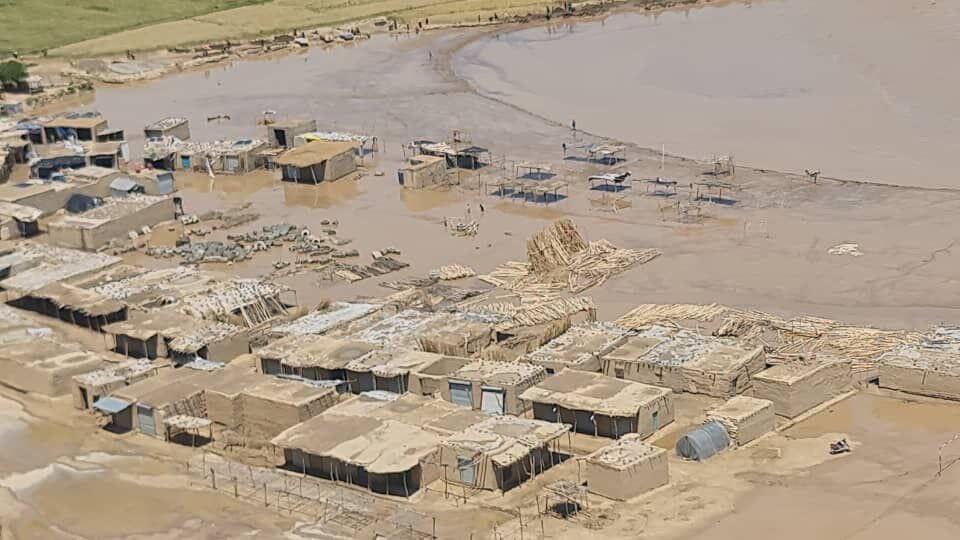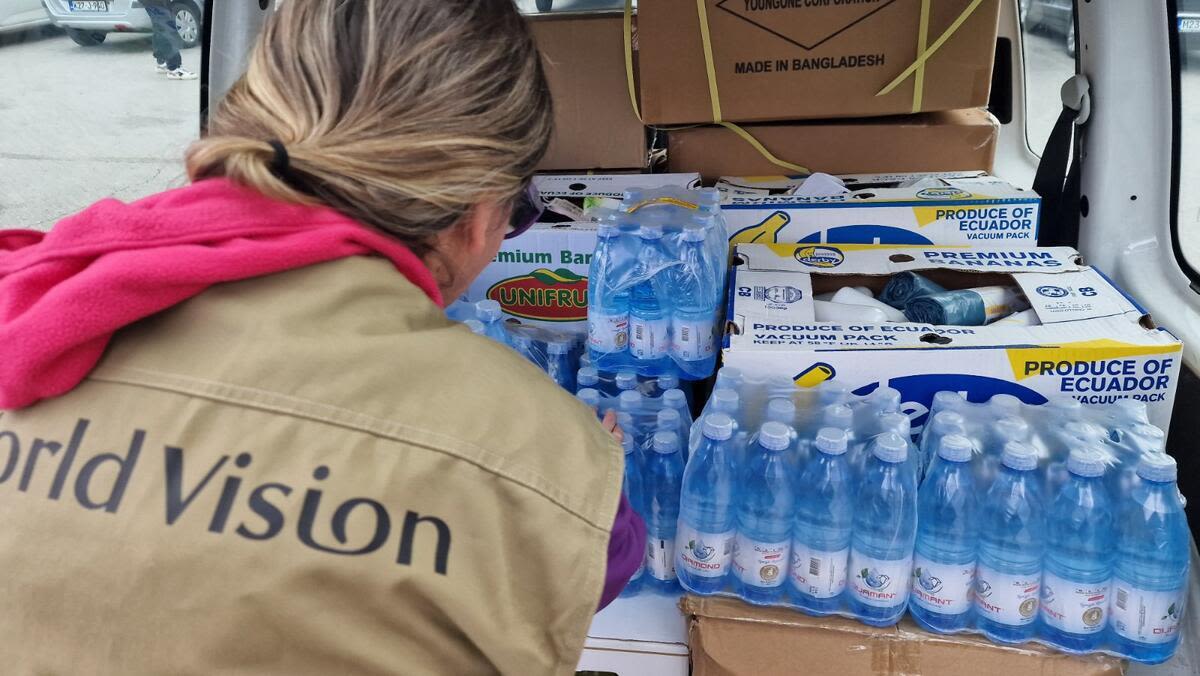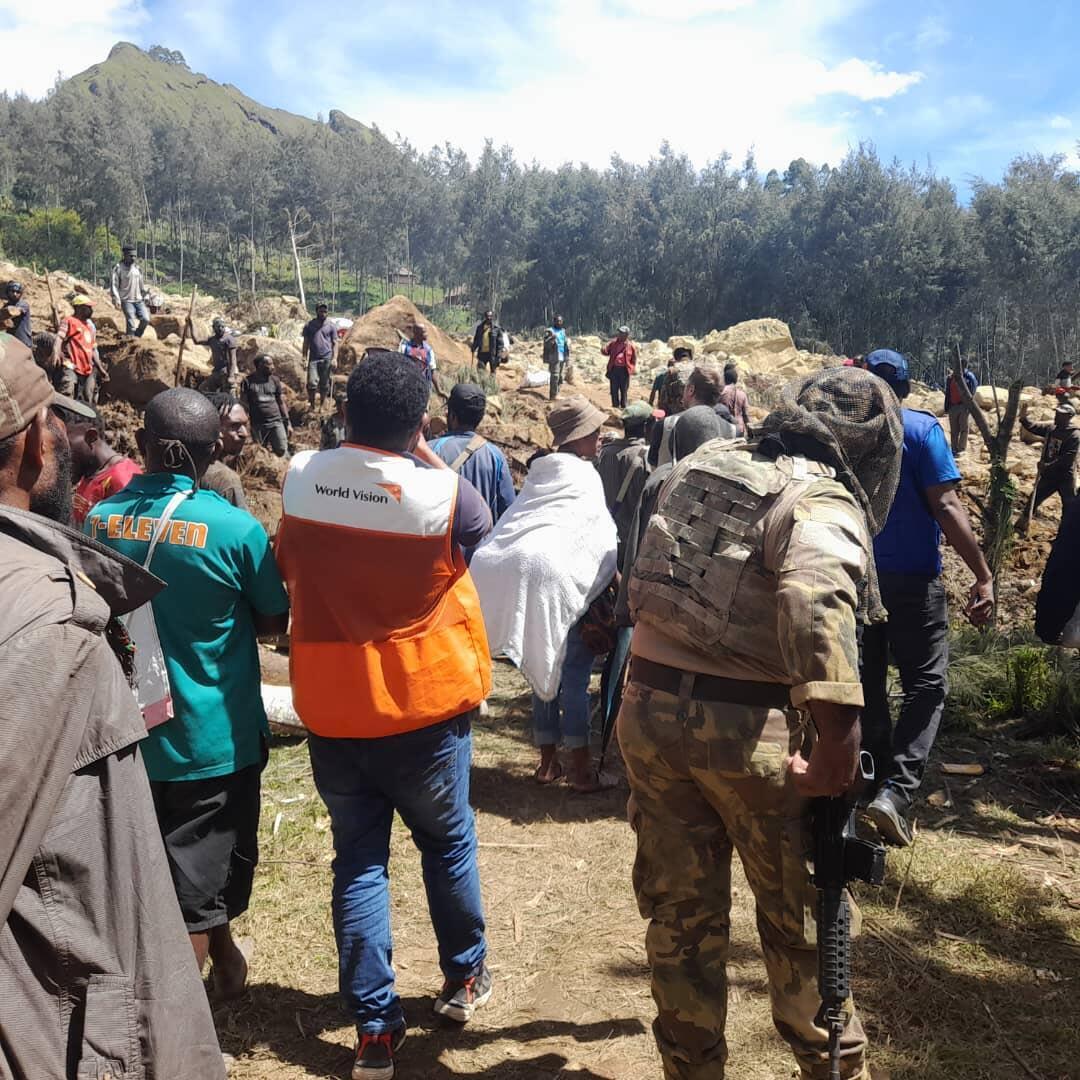11 worst disasters of 2024
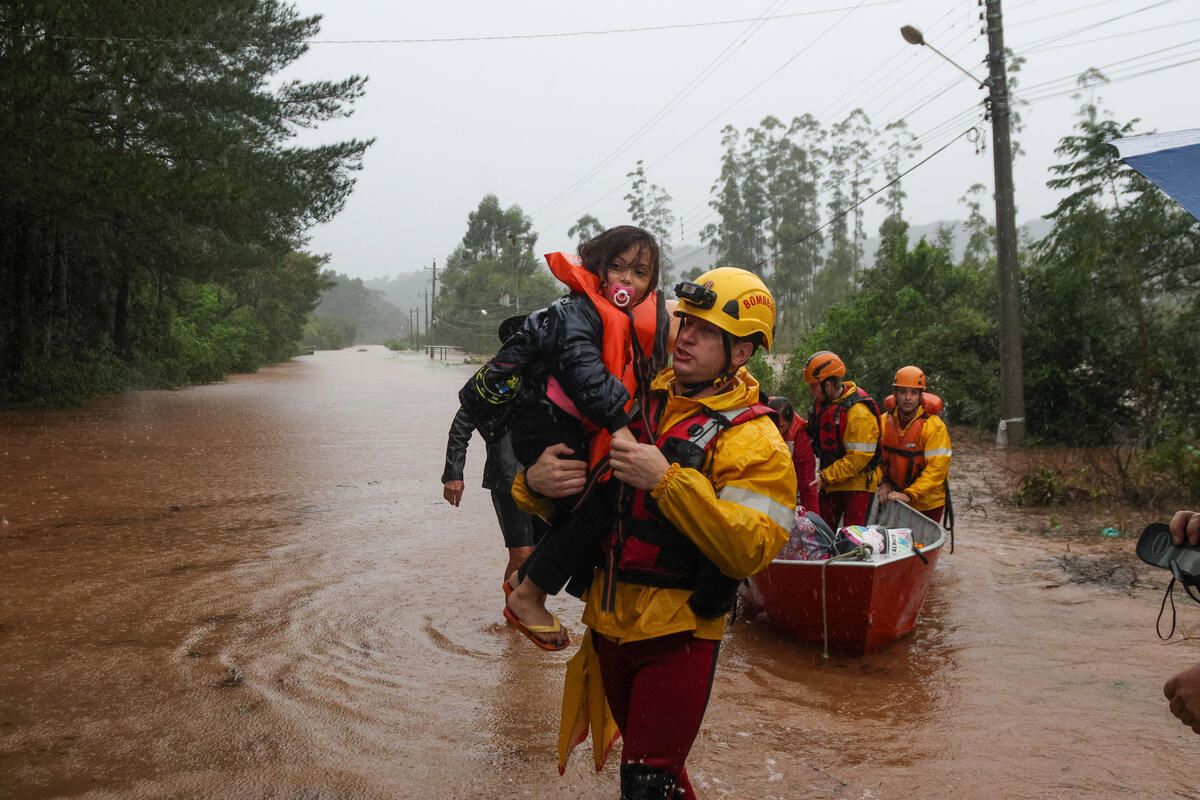
In 2024, tens of millions of people worldwide faced extreme challenges. Floods devastated communities, landslides destroyed villages, and wars and conflict exacerbated suffering, hunger, and poverty. From sudden natural disasters to prolonged humanitarian crises, vulnerable populations encountered immense needs.
According to the United Nations Office for the Coordination of Humanitarian Affairs (OCHA), nearly 300 million people require aid and protection in 2024 due to conflicts, extreme weather events, economic instability, and more. Responding to the global crises, World Vision led 84 disaster responses across 65 countries in 2024, supporting more than 41.3 million people as of November.
Discover the worst disasters of 2024, listed alphabetically below. Learn about how they are impacting people and how World Vision is making a difference for communities in the greatest need.
“This year, we have seen conflict, unpredictable and severe weather events, and other challenges
continuing to impact the lives of children and families around the world
in devastating and heartbreaking ways.
“Throughout my travels this year, I have seen children surviving in some of the hardest conditions I have ever seen — like those who fled the Sudan conflict. In neighbouring Chad, I heard about families raiding anthills for small crumbs
of food and saw children living in triple-digit temperatures with little to no shelter. In these dire circumstances,
I am grateful World Vision is there.
“We pray earnestly for hope, healing, and peace. And we commit to do as we’ve done for nearly 75 years:
Come alongside the most vulnerable people so they can experience fullness of life.
It is our mission and is more needed than ever.”
—Edgar Sandoval Sr., president and CEO of World Vision US
Afghanistan humanitarian crisis
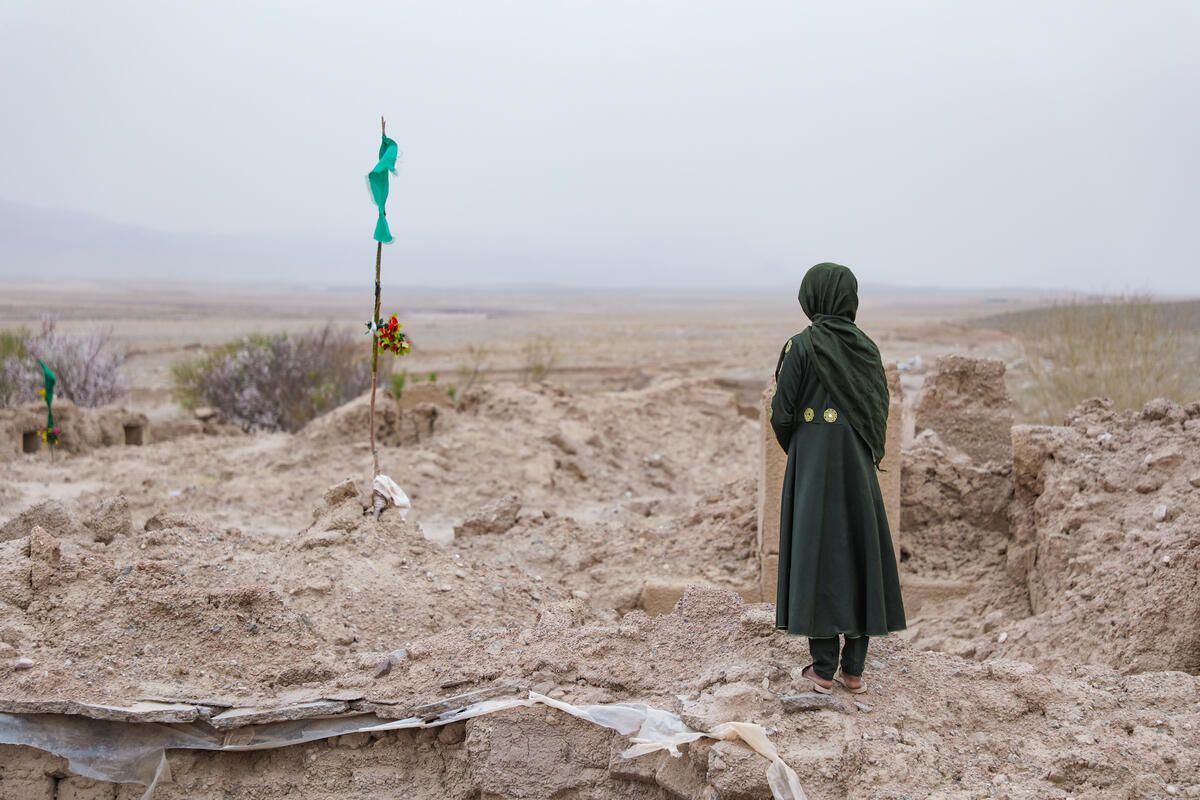
Afghanistan faces one of the world’s most severe humanitarian crises due to the change in governance in 2021. In 2024, an estimated 23.7 million people — more than 50% of the population — were projected to require humanitarian aid.
The crisis in Afghanistan has led to severe hunger, a collapsing healthcare system, damaged schools, and disrupted livelihoods. It has reversed many gains in the past two decades, particularly for women’s rights. Women and girls, already facing significant barriers to education and healthcare, have been disproportionately affected, with many losing access to basic services and safe spaces.
Worsening an already fragile humanitarian situation, severe flooding across the country in 2024 has displaced thousands and destroyed critical infrastructure. The flooding has exacerbated poverty and hunger, forcing families to rebuild their lives amid limited resources and ongoing insecurity.
In May 2024, unprecedented rainfall resulted in widespread flooding throughout Afghanistan, causing many fatalities and significant destruction to homes, livestock, and agricultural lands. Hundreds of thousands of people have been affected in Badghis (pictured above), Ghor, Herat, and Faryab provinces. (© 2024 World Vision staff)
In May 2024, unprecedented rainfall resulted in widespread flooding throughout Afghanistan, causing many fatalities and significant destruction to homes, livestock, and agricultural lands. Hundreds of thousands of people have been affected in Badghis (pictured above), Ghor, Herat, and Faryab provinces. (© 2024 World Vision staff)
World Vision’s response
Between August 2021 to July 2024, World Vision supported 5.1 million people, including 2.5 million children, with critical aid across Afghanistan. We delivered food, cash, and livelihood assistance, ensured access to clean water and hygiene services, supported education, and extended vital protection programmes.
Our donors’ generosity and our staff’s unwavering dedication made this possible. Together, we have positively impacted the lives of Afghan children, their families, and their communities, offering hope and support in challenging times.
Floods
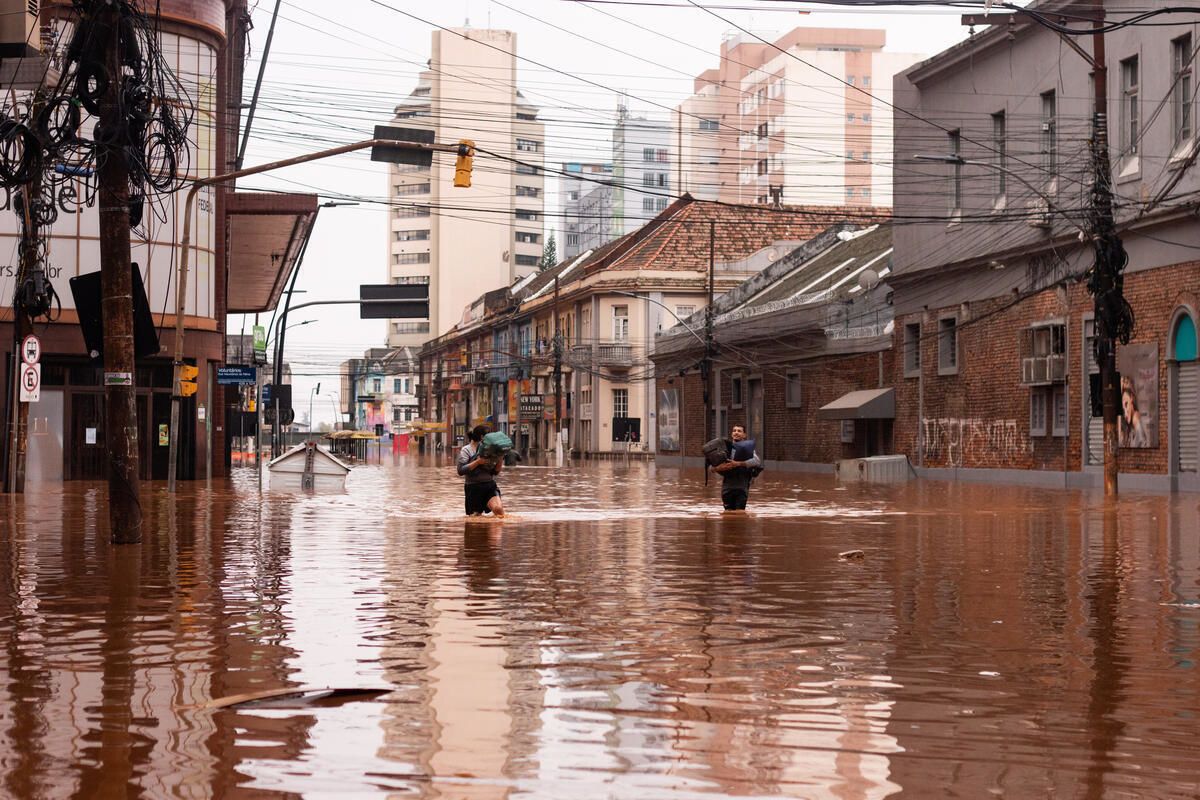
In 2024, deadly floods wreaked havoc worldwide, including in Afghanistan, Europe, and the United States, destroying homes and livelihoods. These disasters have resulted in numerous fatalities, heightened risks of waterborne diseases like cholera, and increased suffering for already-vulnerable populations. Key regions affected include:
- Bosnia and Herzegovina: Heavy flooding damaged homes and infrastructure, creating an urgent need for international aid.
- Brazil: The Rio Grande do Sul state endured relentless flooding, leading to widespread displacement and severe economic losses.
- East Africa: Torrential rains in Kenya and Uganda unleashed widespread flooding, destroying homes and increasing the risk of waterborne diseases.
- Niger: Severe flooding displaced communities and disrupted livelihoods, particularly in rural areas.
World Vision’s response
World Vision is providing lifesaving support to communities devastated by flooding worldwide. Our teams are delivering clean water, food, shelter, and other critical aid to those in need in affected countries. Our focus remains on food security, health, shelter, and ensuring children’s well-being and protection during these challenging times.
In Bosnia and Herzegovina, World Vision supported communities affected by floods in three cities by distributing essential items, including food and hygiene supplies. (© 2024 World Vision/photo by Tahir Žustra)
In Bosnia and Herzegovina, World Vision supported communities affected by floods in three cities by distributing essential items, including food and hygiene supplies. (© 2024 World Vision/photo by Tahir Žustra)
World Vision provides more than 1,000 lifesaving meals every 60 seconds for people affected by disaster and conflict.
Global hunger crisis
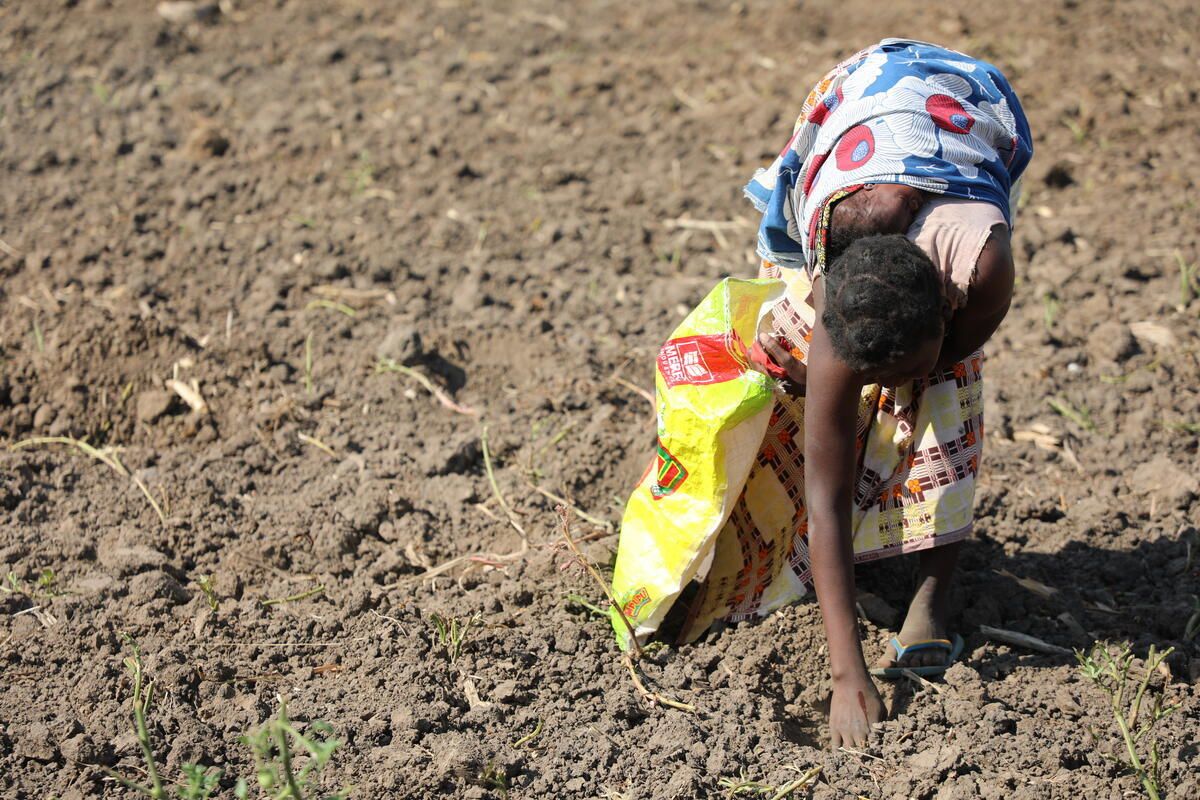
The global hunger crisis escalated 2024, affecting millions worldwide. Conflicts, extreme weather events, and soaring food costs have driven 343 million people in 74 countries in 2024 to acute hunger, according to the World Food Programme (WFP). This crisis is deeply personal for children, families, and communities fighting to survive. Malnourished mothers often give birth to malnourished babies, perpetuating the cycle of hunger. Stunted growth in children, farmers struggling, and entire villages displaced due to food shortages illustrate the emergency unfolding worldwide.
World Vision’s response
World Vision’s response to the global hunger crisis has been one of the most extensive humanitarian efforts in our history. We reached over 39 million people in 28 countries severely affected by hunger and food insecurity, as of August 2024.
Approaching 75 years of global experience, World Vision is uniquely positioned to respond to the hunger crisis. Our work is supported by generous partners, dedicated sponsors, and government and private grants. As the WFP’s largest implementing partner, we deliver immediate food aid during crises to help save lives. We also help equip communities to recover and develop their capacity to provide food for themselves and their families.
Over the last 10 years, 89% of the severely malnourished children we treated made a full recovery.
Haiti’s crisis
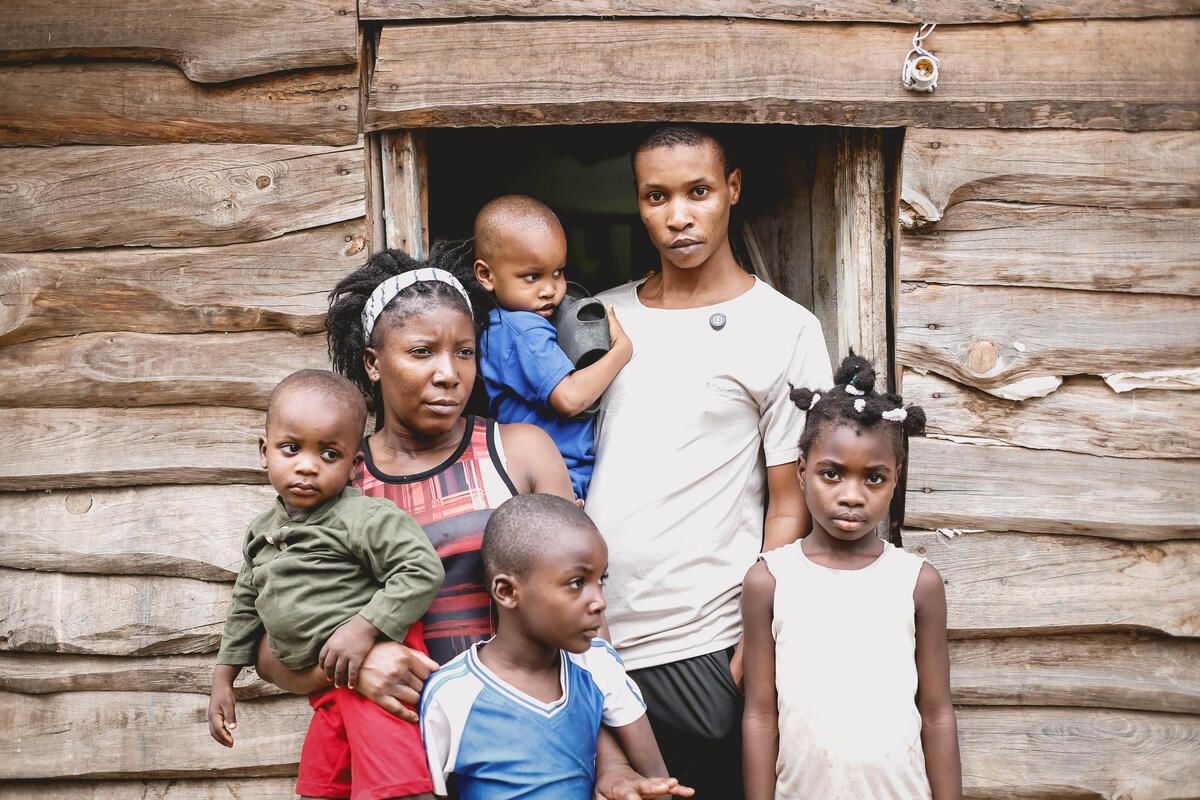
The crisis in Haiti intensified in 2024, with devastating impacts on its citizens, especially children. Armed gangs control significant portions of the country, and the violence has reached unprecedented levels, with thousands of people reported killed, injured, or kidnapped since the start of the year. The humanitarian situation is dire, with 2 out of 3 children urgently needing assistance. Cholera has resurfaced, and many areas are experiencing food and water shortages. Additionally, the situation has worsened gender-based violence, with a sharp rise in sexual violence against women and children.
World Vision’s response
Despite the challenging circumstances, World Vision is steadfast in our commitment to protecting vulnerable children and families in Haiti. As of September 2024, World Vision has supported 93,327 people directly, over half of whom are children. Our efforts include delivering essential humanitarian aid such as food, clean water, and psychosocial support. Additionally, we offer cash assistance and targeted programmes for survivors of gender-based violence.
With over 45 years of dedicated service in Haiti, World Vision continues to provide critical support through long-standing programmes across the country.
“Every day is a struggle.”
Hurricanes and typhoons
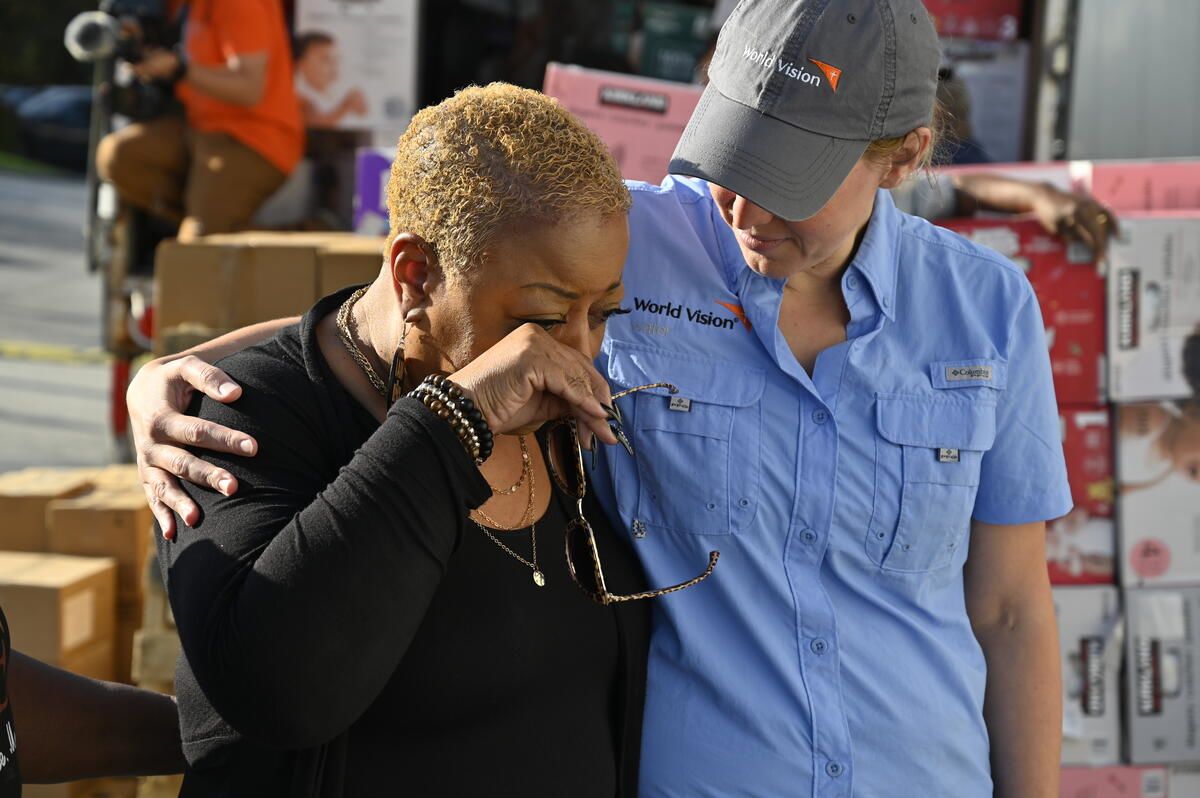
In 2024, tropical storms caused widespread devastation across multiple regions. Hurricanes and typhoons left millions displaced and communities struggling to recover from the catastrophic damage.
- Atlantic and Pacific storms: The season began with Hurricane Beryl, an exceptionally early Category 5 storm — the strongest ever recorded in the Atlantic. By October 11, 13 storms had formed, including four major hurricanes: Beryl, Helene, Kirk, and Milton.
- Southeast Asia: Typhoons inflicted severe destruction, especially in the Philippines, where Typhoon Man-yi caused widespread displacement and loss of life on November 17, 2024. The country experienced a series of storms that followed in quick succession. Typhoon Yagi hit northern Vietnam, Myanmar, Laos, and Thailand on September 7, 2024, causing over 500 deaths and thousands of injuries and displacing many. The flooding and landslides affected nearly 6 million children, worsening the crisis.
“Children in East Asia and the Pacific are experiencing six times as many disasters as their grandparents. The girls and boys in the region, are exposed to multiple, overlapping climate and environmental hazards.”
World Vision’s response
World Vision is actively supporting recovery efforts globally by providing shelter, food, and clean water, and by helping rebuild homes in affected regions. Immediate emergency relief efforts are ongoing in all four countries affected by Typhoon Yagi. We are also partnering with the WFP, local authorities, and various agencies to ensure that our assistance reaches communities where our presence is limited.
In the United States, World Vision has been responding to communities’ urgent needs created by these catastrophic storms, including Hurricanes Helene and Milton. Thanks to generous donors and through the help of more than 38 churches, faith-based organisations, and community organisations, World Vision has distributed a total of 29 truckloads of aid to support families in Florida, Georgia, and the Carolinas as of November 26. Our distributions have included supplies such as clean water, generators, diapers, personal care items, and more to ensure that people in hard-hit areas can access the essentials they need. Our commitment to supporting these communities in both immediate recovery and long-term rebuilding is unwavering.
“We know the road to recovery is long, and World Vision will continue to stand with the communities affected by Hurricane Helene. We are committed to offering support, compassion, and resources to help impacted families recover.”
Landslides
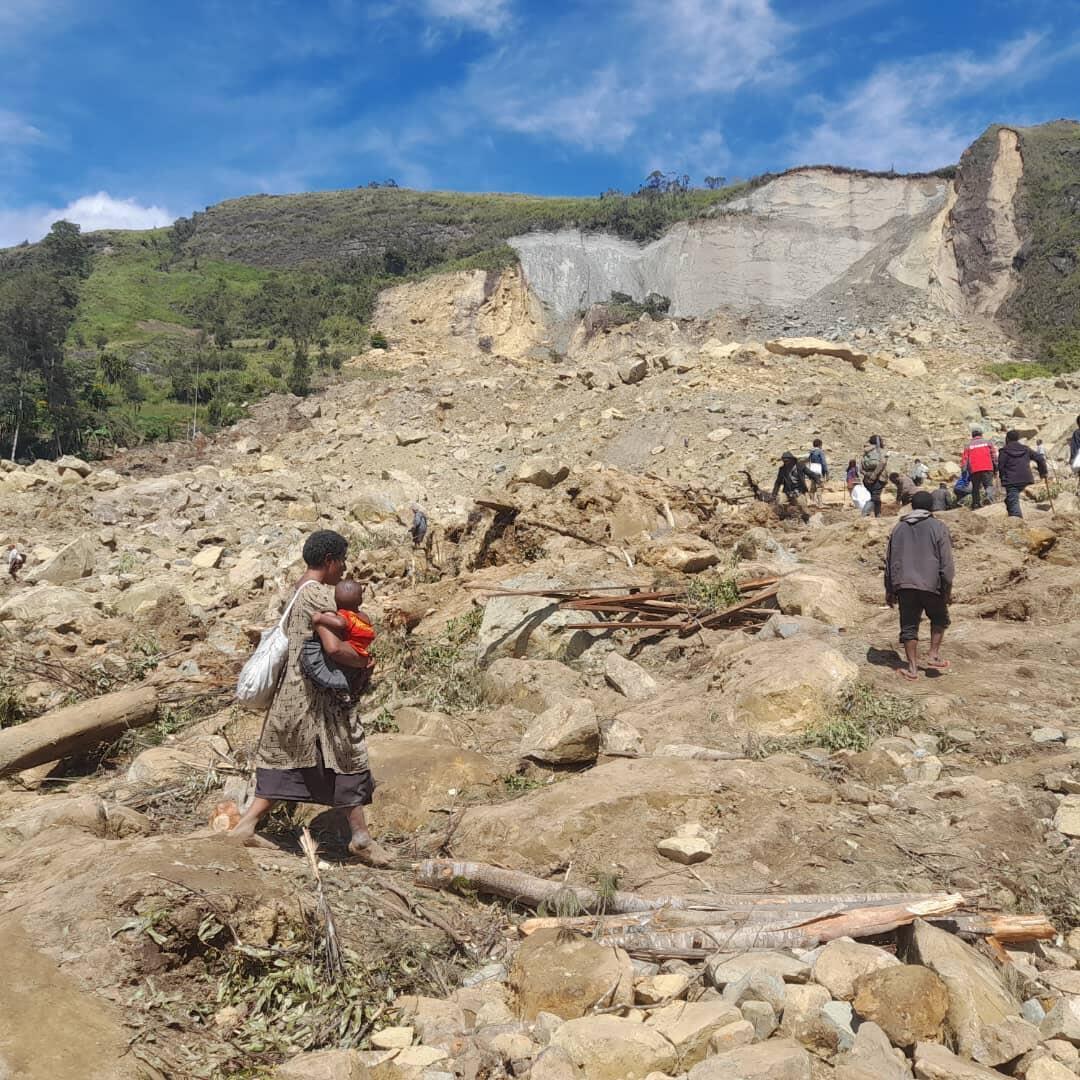
Recent heavy rains triggered deadly landslides in Papua New Guinea and Ethiopia, causing significant loss of life, displacement, and destruction.
Papua New Guinea: On May 24, 2024, a massive landslide struck in the remote Enga Province, burying an entire village and claiming at least 670 lives. The disaster also displaced thousands of people.
Southern Ethiopia: On July 21 and 22, 2024, torrential rains caused three consecutive landslides in a mountainous area of Gezei Gofa Woreda in the Gofa Zone, leaving communities devastated and displacing thousands.
World Vision’s response
A World Vision aid worker surveys the devastating aftermath of the landslide in Papua New Guinea. (© 2024 World Vision)
A World Vision aid worker surveys the devastating aftermath of the landslide in Papua New Guinea. (© 2024 World Vision)
In Papua New Guinea, World Vision worked closely with government authorities and humanitarian partners to distribute relief kits, which included essentials like blankets, cooking utensils, and containers, to affected families. We also secured water and sanitation facilities, including five water tanks, handwashing basins, and emergency latrines, to be installed at the relocation site in coordination with local authorities and aid partners.
In Ethiopia, we acted immediately, delivering essential relief supplies to meet the urgent needs of vulnerable people with care and compassion.
“I’d lost my father years ago. I relied on my mother for everything. She raised me with love and care, sent me to school, and met all my needs. But now I am in despair since I have no one left to rely on. I’ve lost hope in surviving, pursuing my studies, and achieving the aspirations I once held dear.”
Middle East crisis
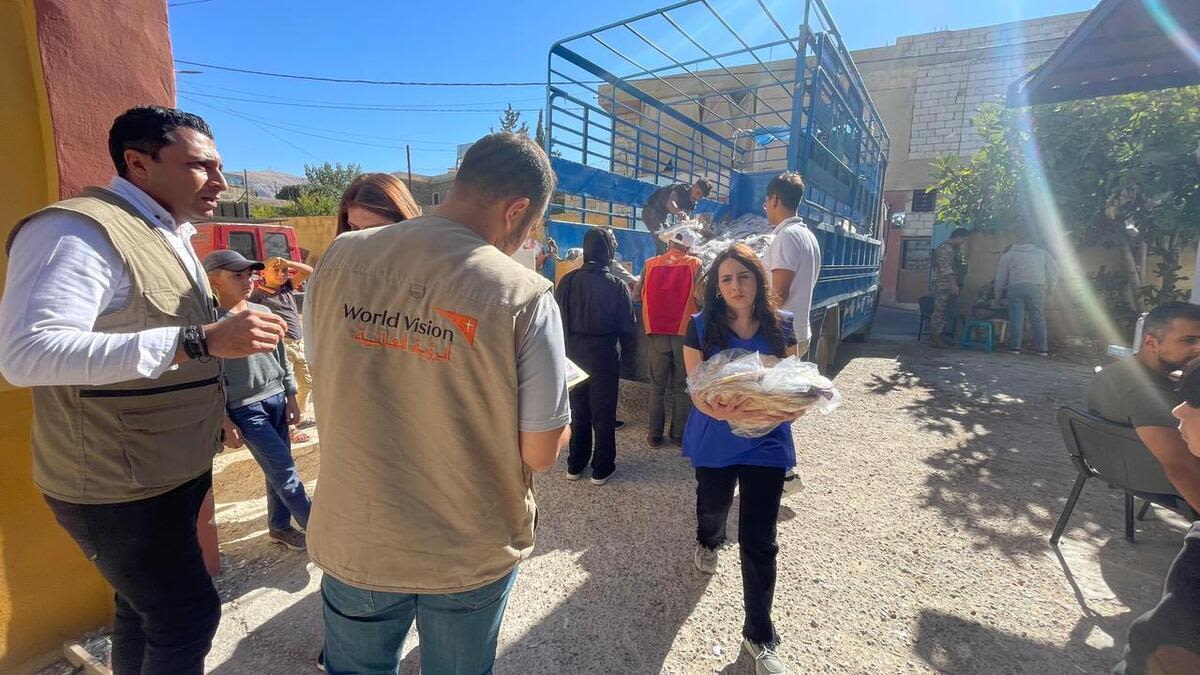
The Middle East faced severe humanitarian challenges in 2024, with Lebanon, Syria, Gaza and the West Bank each experiencing interconnected crises. In Lebanon, around 1.3 million people have been forced to flee due to escalating violence, including many Syrian refugees who previously sought safety there. Meanwhile, Syria’s prolonged conflict, ongoing since 2011, has left millions dependent on humanitarian aid, with 90% of the population now relying on assistance. In Gaza, the ongoing blockade and escalations of violence have deepened an already dire humanitarian situation, leaving over two million residents grappling with limited access to basic necessities such as clean water, food, healthcare, and electricity.
This complex crisis has strained resources across the region as humanitarian organisations, including World Vision, work to deliver critical aid and promote long-term recovery.
World Vision’s response
During the first year of the response, World Vision reached nearly 700,000 children and families in the West Bank and Lebanon, rapidly scaling up support whenever violence intensified. We provided vital aid, including hot meals, food kits, and cash assistance to ensure families could eat. We repaired schools, supported e-learning for students, and bolstered mental health and psychosocial services. Communities benefited from equipped safe spaces, strengthened health clinics, and improved fire-fighting capacity, along with access to clean water, sanitation, and hygiene essentials.
Following the escalation in Lebanon in September 2024, World Vision’s Syria response has partnered with local organizations to assist forcibly displaced Syrian and Lebanese children and their families seeking refuge in Syria.
Rohingya refugee crisis
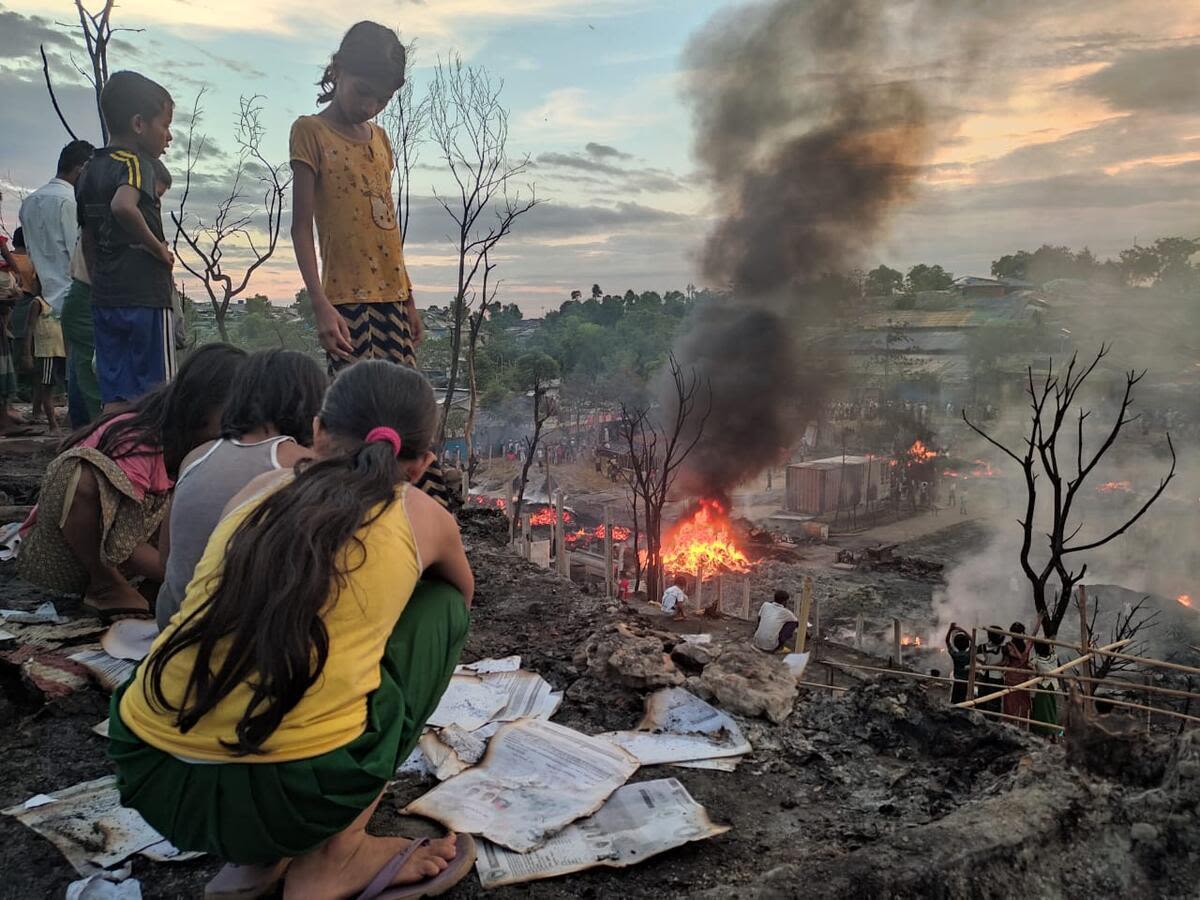
Seven years after fleeing violence in Myanmar, nearly 1 million Rohingya refugees remain in the overcrowded Kutupalong camp — the largest refugee camp in the world — and surrounding settlements in Cox’s Bazar, Bangladesh. These camps not only are overcrowded but also are situated in a natural disaster–prone region, leaving refugees vulnerable to frequent hazards.
The trauma of displacement continues to weigh heavily on the Rohingya people, who rely entirely on humanitarian aid to survive. Nearly half of the refugees are children, many born and raised in the camps, knowing no life beyond their borders. As the years pass, uncertainty continues to overshadow the future of the Rohingya people.
World Vision’s response
World Vision is helping these refugees by providing food, shelter, and educational opportunities for children while advocating for long-term solutions.
World Vision operates in 34 Rohingya refugee camps. In 2023, we reached over 420,749 refugees — and we are committed to supporting host communities that are impacted by the influx of refugees as well. Throughout this time, our focus remained steadfast on serving the most vulnerable people through food security and livelihood assistance; health, nutrition, hygiene, and sanitation support; and child protection, education, and gender-based violence prevention programming.
Sudan crisis
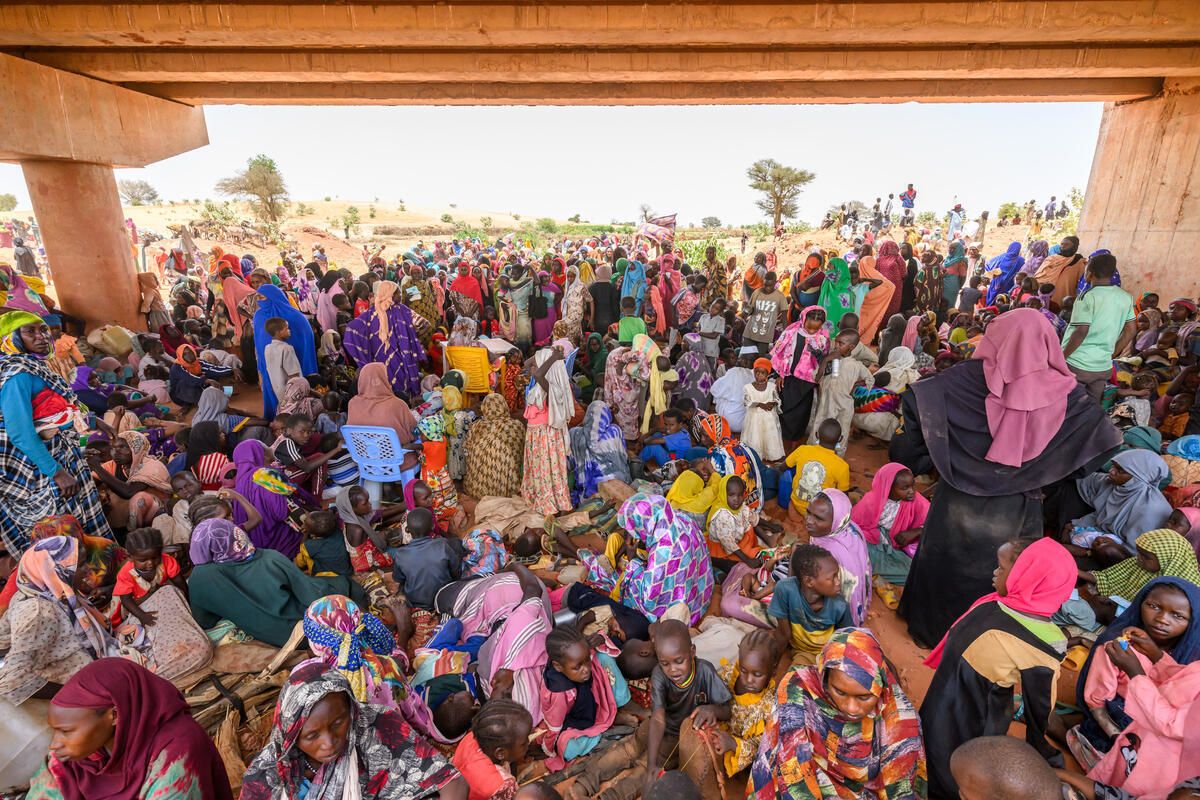
Since April 2023, the conflict in Sudan has resulted in extensive destruction and displacement, driving 14 million people from their homes and worsening the already dire hunger crisis. Hundreds of thousands in Sudan are experiencing severe food shortages. Famine has been confirmed at a displacement camp in North Darfur, which houses around 400,000 people.
The impact on women and girls has been particularly severe. Millions of women and girls are facing immediate threats of violence and displacement while struggling with severe food insecurity. This dire situation heightens their vulnerability to sexual and gender-based violence.
Sudan now has the highest number of displaced children globally. The escalating food crisis has pushed much of Sudan to the brink of famine, leaving families to struggle for every meal and to go days without enough food. Millions of children are experiencing severe hunger and life-threatening conditions.
World Vision’s response
As one of the largest humanitarian aid organisations in Sudan, World Vision has reached more than 2 million people — most of them women and children —since the start of our response in 2023, delivering lifesaving aid including food and providing access to clean water, child protection support, health and nutrition programmes, sanitation and hygiene solutions, and more.
Venezuela migrant crisis
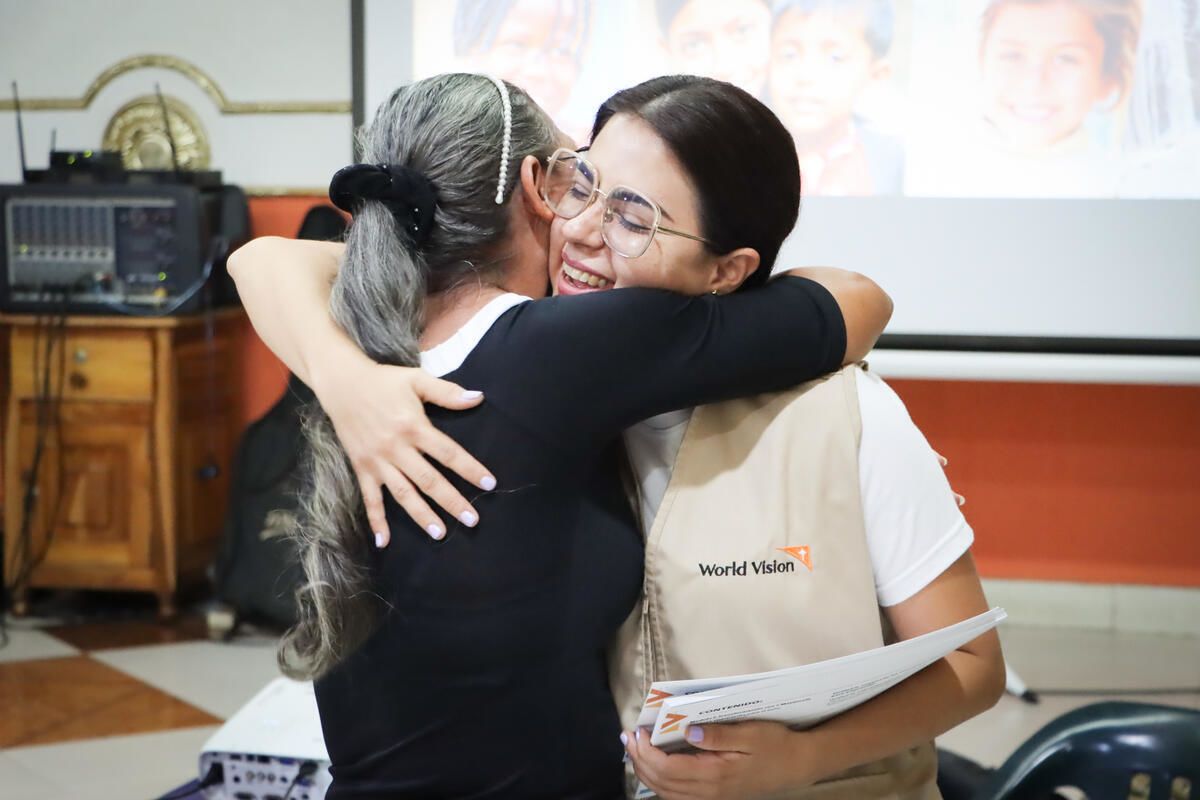
Once a thriving nation in Latin America, Venezuela has faced a dramatic decline over the past decade. Political instability, economic collapse, and severe food, medicine, and electricity shortages have created a humanitarian crisis, forcing millions to flee for better living conditions and opportunities. Neighboring countries like Brazil, Colombia, Ecuador, and Peru have struggled to support the ongoing influx, straining social services in border regions.
As of June 2024, more than 7.7 million Venezuelans have left their homeland, marking one of the world’s largest displacement crises. Like the Syrian refugee crisis, this mass exodus underscores the immense toll of political and economic instability on human lives.
World Vision’s response
World Vision has actively responded to the Venezuela crisis through our “Hope Without Borders” programme. Through this programme, we have reached over 2.1 million people across seven countries — Bolivia, Brazil, Chile, Colombia, Ecuador, Peru, and Venezuela — with critical support between 2019 and March 2024.
Our support prioritises child protection, education, food security, and access to clean water, sanitation, and hygiene resources. Beyond immediate aid, we help equip families for the future through employment training and mental health services. Collaborations with faith-based organisations help create safe spaces and provide skills training and language classes. Our cash transfers and food aid are a lifeline of stability and hope for many.
War in Ukraine
The conflict in Ukraine has profoundly affected millions of people since February 24, 2022. Many have lost loved ones, suffered injuries, or experienced significant disruptions to their lives. Forced from their homes, living in unsafe conditions, and unable to attend school, children face unimaginable hardships.
As of October 2024, the conflict has forced more than 6.7 million people to seek shelter abroad, according to U.N. reports, and 3.5 million people are displaced within Ukraine. Civilians continue to endure casualties, displacement, and an urgent need for food, shelter, and medical care.
World Vision’s response
World Vision has provided lifesaving aid, shelter, child protection, and mental health support to over 2 million people impacted by the crisis across Ukraine, Moldova, Romania, and Georgia as of September 2024. Of those reached, 45% are children.
“There are no words that can describe how this war in Ukraine is bringing innocent children and civilians to a spiral of misery and suffering. It is tragic to witness the situation.”
Our commitment to global disaster relief
The top disasters of 2024 have reminded us of the vulnerability of millions of people worldwide to both natural and human-caused crises. Whether responding to floods, food insecurity, or conflict-driven displacement, World Vision is dedicated to providing lifesaving aid and supporting communities as they rebuild for stronger, more resilient futures.
Article published on December 2, 2024
